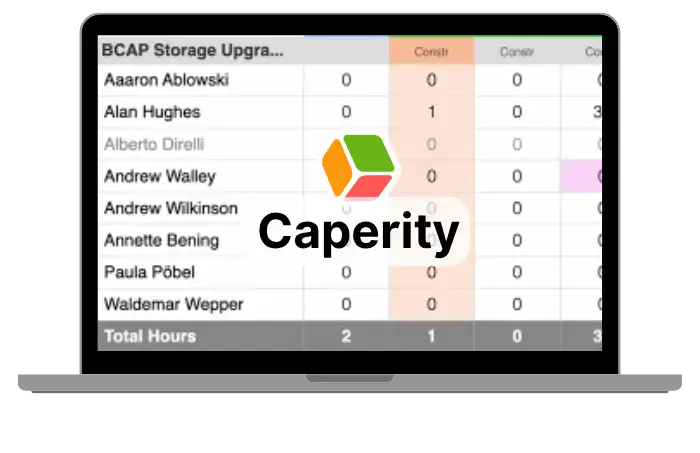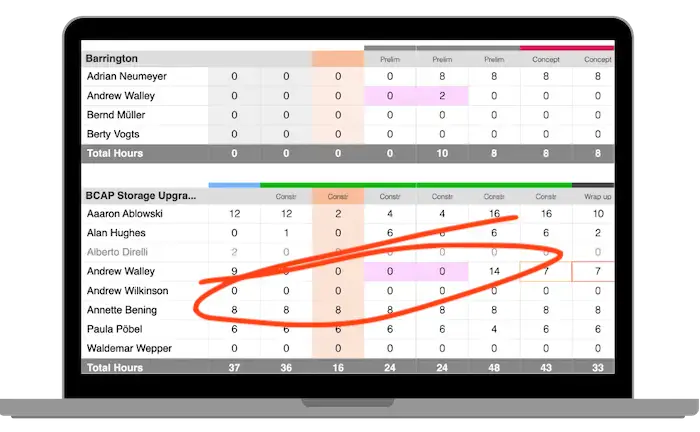Modern human capital management (HCM) solutions that include payroll are a big initiative for a company, and certain steps can help tie success to the bottom line.
Some of the return on investment (ROI) created by the new technology is realized by attracting, fostering and retaining top talent. From the moment that an employee applies for a position in the new solution to the time that they receive their last W-2 before retirement, they are interacting directly with the HCM platform. It is a key connection point between an organization and its people.
The new solution is the primary access point to the benefits of belonging to the organization, both financial and otherwise. An employee should be able to see their performance history, feedback, gains in salary/position, financial information and other key data points when logging in and viewing their profile. It is a powerful engine and one that represents an organization’s efforts to manage its people effectively and fairly.
A powerful HCM platform shows a commitment to harness, manage and drive the workforce in a strategic manner toward the company’s goals
To achieve all the benefits that HCM technology can provide, thoughtful preparation and actions during the launch and roll out of the new solution are critical.
As a Project Manager (PM) assigned to a new HCM platform launch, I consider key stakeholder engagement a critical step. What do they hope to get out of their new software? What are the success criteria that will differentiate the new platform from the old in a meaningful way? This exercise should be conducted with members of all departments impacted by the project: payroll, finance, human resources, and IT.

The feedback from this discovery exercise is fed back into the project charter and reviewed with the project sponsor and/or steering committee prior to the project start. This is the yardstick by which the project will be measured and will be your first engagement into the human side of the project.
Getting started with a payroll implementation? Make discovery effective by taking these steps
Overall, the “human discovery factor” will impact the project in three important ways:
- The impact to the customer team. These are the system administrators and payroll managers who will be the super users of the system and whose participation in the project as key subject-matter experts (SMEs) is paramount to the success of the project.
- The predisposition of the project team to attempt a “lift and shift” vs. process improvement approach. Many people will resist change and want to go with what they know instead of exploring new ways of accomplishing goals.
- The rollout to the end user, which encompasses all activities that contribute to individual employees successfully adopting the new platform.
As the project manager, it is your job to ensure that each one of these areas is carefully managed within the project plan/strategy.
In the following section, I will show you how you can manage those areas in a professional way and share some best practices that have worked in our projects. I’m confident you will find them useful as well.
Best practice #1: Carefully manage the impact to the customer team
The payroll industry is marked by low turnover and high tenure, due to the degree of institutional knowledge and expertise that payroll managers attain working within the complex world of administering payroll. These SMEs are some of the key stakeholders and contributors to the implementation project. Their involvement is key to understanding the payroll policies of the company and how to build the new system.
This requires much of their time for discovery sessions, analysis meetings, testing and more. This time is piled on to their “day jobs,” which still must be performed. Often, they will not be available during the initial part of the week on payroll days or during regular business hours.
Seek to reaffirm how valuable their contributions are to the success of the project and continually ask if there are tasks that can be taken off their plates by other team members that maybe do not require their expertise.
For a PM, it is important that we be sensitive to the fact that, although this is our full-time job, it is not the customers. How should this influence your actions?
When scheduling activities that require a heavy lift on the part of the customer, be sure to get their input. What is a realistic/attainable timeline for you to return this to us? For some customers, it may be two weeks. For others, it may be twice that. Gain a common understanding with the customer on when to expect certain deliverables, and then hold them accountable by checking in often and offering guidance when needed.
Additionally, some on the customer team may not have been consulted about the decision to move to a new system and could be resistant to the change initially. They have been administering HR/payroll the same way for so long that they don’t want to learn a new platform.
In these instances, focus on where the customer spends their time and what their pain points are. Try to ensure that you demonstrate how the new platform will make their lives easier, not harder. This is not always the case. Sometimes, customers are downright thrilled to be trading an antiquated system for the advanced platform.
In my experience, a payroll admin worked well over 40 hours a week plus weekends for years to perform manual tasks within the payroll system. When she discovered that, through automation, we would be taking much of that off her plate, she was elated. After the project was transitioned, I received an email saying she planned her first long vacation in years due to the time the new system saved her.
If there is resistance to change, it is critical to document success criteria at the beginning of the project to show the customer what they can plan to get out of the system. You can consistently compare the anticipated results of the project with the success criteria to demonstrate value to the customer.
Do this throughout the project to continually remind the customer that the end state will be better than the current state. During project closing, the side-by-side of how the new system has met and solved the customer pain points will make all the effort worthwhile.
Best practice #2: Process improvement should have priority, avoid ’Lift and shift’
“That’s the way we have always done it” is a phrase that we often hear on payroll implementations. Mostly, this is from HR and payroll professionals with long tenures in the industry and vast institutional knowledge of how their company conducts business. The lift and shift way of thinking is to take a current system and simply copy/paste to a new system without changing anything.
These stakeholders need to be reminded that this approach will cause them to miss out on a golden opportunity to capitalize on the new system, to challenge the way things have been done and look at their processes with a fresh and discerning eye.
In one example, the project team found significant manual work that could be avoided if the system were configured differently by leveraging an automated integration with an outside vendor that housed employee deduction changes. In another, we were able to significantly reduce and streamline the framework by consolidating job codes and org levels, even eliminating a level altogether because we found through discovery/analysis it was no longer needed.
These findings of better ways to use and manage the system will serve the customer and continue to increase the ROI of the implementation project for years after go-live. The project team should conduct substantial testing and a deep dive into why customers do things a certain way, which is critical to ensure that the customer takes full advantage of the new system. To ensure this, the PM should dedicate a significant portion of discovery and analysis to process improvement.
Some opportunities for improvement must be handled with sensitivity. For example, a customer may discover errors in the way they have been running payroll. On one occasion when this happened, the difference was negligible and could be corrected, but the payroll team was upset and embarrassed when it was brought to light. When this is realized, find a way to fix it and move forward. There is nothing to be gained by putting a focus on it.
Best practice #3: Remember you are rolling out to end-users (employees)
Usually, the end-users consist of the individual employees and managers who will be interacting with the software to perform key tasks (such as clocking time, viewing pay stubs, and approving PTO requests).
The last thing that any project team wants is to have a successful implementation of the new HCM system only to have it summarily rejected by the end-user. If the rollout is not properly timed and carried out, they could feel broadsided by the new technology and resist the change altogether. To counter this, there are specific actions that can be performed at the PM level:
- appointing a change manager
- leveraging a communication strategy encouraging user
- adoption and training.
The PM should encourage the customer to appoint a change manager along with a change board with a cross-section of managers throughout the organization. This will ensure that managers from the various employee groups are represented and can give feedback on how the upcoming change will affect their employee segment.
The change manager’s job is to capture this feedback to ensure that the rollout strategy and communication plan are tailored effectively. This process also serves to make the change board the new “cheerleaders” of the system. They get a glimpse into what is coming with the project and carry that message back to the employees.
No two organizations are alike, so the communication plan must be specific to each. The project plan should include activities to provide the change board with the necessary tools to enact the strategy it decides on. The customer should not be left to reinvent the wheel, so this can take the form of email templates, posters, training guides and others. These materials serve to get the word out on the upcoming go-live and will prepare the end-users for the changes to come.
The new HCM platform will most likely have a lot of features and enhancements than the legacy system. Just because a feature is there, does not mean it has to be used right away. A controlled rollout of additional functionality is sometimes best to ensure the end-user is not overwhelmed by the sheer magnitude of new options. A controlled approach will also make the project less prone to scope creep, as well as more manageable and more focused on the key functionality required for go-live.
Finally, the training to the end user is often overlooked but must be managed by the organization with the help of the project team. If no one knows how to use the product, go-live will not be an enjoyable experience for anyone. This training is particularly targeted to higher-level users such as managers who could be reviewing/approving time, payroll admins who will be running the payroll calculations, HR admins who will be managing the employee data and system admins who will monitor user access and rights.
It is recommended that a “train the trainer” methodology is leveraged to ensure that accountability for expertise and knowledge of the system becomes ingrained within the business.
Conclusion
Payroll implementations can be some of the most complex and challenging projects to take on. They touch every area of the organization and sometimes span many different countries and languages. They encompass virtually every major department within a customer organization. It is used by every employee without exception in one fashion or another.
These projects are also arguably some of the most impactful and rewarding to be a part of, as they improve people’s lives on a very basic level. For administrators of the system, they empower access to troves of valuable data about the employees of an organization, as well as influential tools that can be used to manage them. For the manager, it gives insight into a team and the ability to encourage and drive them to succeed through setting goals and evaluating performance. Finally, it connects individual employees directly to their organization and their compensation, allowing them to manage it effectively.
For a project manager charged with an HCM platform implementation, accounting for the human factor of dealing directly with employees’ livelihoods is one more aspect of our responsibility. It is, however, arguably one of the most critical and it can never be ignored.
Author
-

Jack is an experienced Project Manager, specializing in the HCM and HR/Payroll industries. He holds an MS in Information Technology and an MBA from Nova Southeastern University as well as his PMP certification. Jack is devoted to advancing the profession of Project Management, in particular the discipline of leading others in large, complex projects. Jack is a Major in the United States Army Reserves, a husband and father of three. In his spare time he enjoys hiking the Appalachian Mountains with his family and trail running.
View all posts

